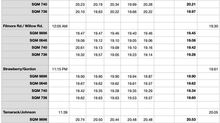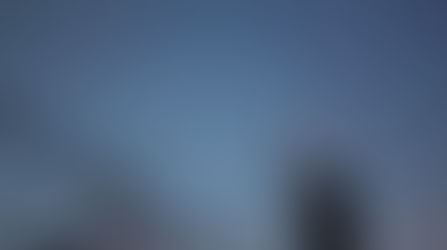Venus Gets Mooned
- Chuck Bueter
- Nov 21, 2015
- 2 min read
The moon occults Venus midday on December 7 when the illuminated edge of the crescent moon glides in front of the planet. The obscured planet then reappears over an hour later, popping out during daylight from behind the dark side of the moon. It's a great opportunity to use binoculars and small telescopes to watch the solar system in motion, and a challenge (if even possible) to observe with the naked eye.
Here are the details and simulated images from the perspective of South Bend, IN. A public observing event will occur at Fiddler's Hearh Public House at 127 N. Main St. Bring your binocs.
12:21 PM Start
Shortly after noon, the bright sun, the thin crescent moon, and the planet Venus are nearly level with each other, only about 25 degrees above the horizon. The moon/planet pair are 42 degrees to the right of the sun. For perspective, your fist held at arm's lenght subtends an angle about 10 degrees across. The image below shows the yellow disk of the sun to the south, with Venus near the left (illuminated) edge of the moon in the southwest. Using the moon as a guide you may be able to detect Venus in the daytime sky well before the occultation begins.

Near 12:21 p.m. EST, the disk of Venus will start fusing into the light of the moon, which is illuminated 13%. While the illustration below suggests the dot of Venus is readily discernible next to the moon, in the real sky Venus will likely blend in with the moonlight against the bright sky. Binocs will help, if not be requisite; a telescope is even better.

A telescopic view may reveal that Venus (labeled below next to the moon) is less than circular, in a gibbous phase. Because the planet has some size, it takes nearly a minute for the moon to glide completely over Venus.

You'll need binoculars or a telescope to see the occultation best, so be cautious about the present sun. View from in the shade so you can't inadvertently gaze into the sun. While you've got the scope set up, have a proper solar filter on hand so you can peruse the sun for sunspots while you're waiting 70+ minutes for the planet to reappear. For current satellite images of the sun and its surface features, see Spaceweather.com.
1:35 PM Finish
About ten seconds before 1:35 p.m., Venus begins to reappear from behind the dark limb of the moon. Seemingly out of nowhere the planet pops out and grows until it is back to full brightness at magnitude -4.2. Again, with the moon as your guide, this is a good time to attempt to see Venus with the naked eye. Not many people can claim they've seen Venus midday, with or without optics.

Geeky Details
For advanced telescope users, here are details for Venus at the beginning of the occultation.

...And details for Venus at the end of the occultation. Notice that at reappearance Venus is only 16 degrees above the horizon at 1:35 p.m., so be sure to select an observing site with a low southwestern horizon.

For occultation times at other locations, see links from Universe Today article at http://www.universetoday.com/123611/astro-challenge-watch-the-moon-occult-venus-in-the-daytime/ and from Sky & Telescope at http://www.skyandtelescope.com/observing/moon-flys-by-catalina-occults-venus-on-dec-7th120220150212/.








































